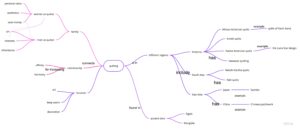At the beginning of my research, I found the basic meaning of quilting from wikipedia, “Quilting is the term given to the process of joining a minimum of three layers of fabric together either through stitching manually using a needle and thread, or mechanically with a sewing machine or specialised longarm quilting system.” It basically stitches different fabrics together for decoration or increase thickness. The use of quilting could be found in a variety of textile products that includes “bed coverings, home furnishings, garments and costumes, wall hangings, artistic objects and cultural artefacts.”
Historically, quilting could be the early format of upcycling because it use of remnants and offcuts for the creation of new products.
Originally, the word “quilt” is associated with the Latin word culctia which means cushion. The term is firstly used in England in the 13th century. However, this technique of quilting has long history that can be traced back to the ancient Egyptian first dynasty.
Quilting could represent different meanings and roles in different culture. For example, From the book Sweet Clara and the Freedom Quilt, enslaved people used quilts as a means to share secret messages in order to escape slavery. For Native American, they learned quilting and use star quilts to replace buffalo robes which were used in births, marriages and ceremonies.
Relationship between kinship and quilting:
From my basic research, quilting played an important role in some country’s society. It is a good way to maintain relationship between friends, family and community. For example, in Pakistan and India, Friends and relatives gather to make a ralli for a dowry quilt. Community helps to stitch different layers of cloth.
Moreover, in the history, quilting also reflect women’s “voices” which cultural studies has overlooked. According to the quilts women made, they don’t only tied family and friends together, but also show female’s social value. Quilts became presentations which showed women’s concerns, vision and aesthetics.
Problem:
For the future research, I am concerned the connection between quilting with poverty, female and society. For the reason, historically, quilting is the method to connect leftover material, and in Chinese background about poor family, women always take the role to stitch different cloths together for the family. Therefore, what is the function of quilting and what does it means to women in a poor family?
Related words: Patchwork, quilters, quilt, textiles
Quilting in different country:
China:

Africa:

Native American:

experimental making:
I tried to simulate quilting by using some image textures as the leftover material. Then i do some operation to these fabrics(cutting, sewing, patching) for making different designs of patterns.


Related article reference:
Beeman, L. L. (2003). Connecting Centuries, Countries, and Cultures: Quilting and Patchwork in South Asia. Piecework, 11(6), 61–65.
Colleen R. Hall-Patton. (2008). Quilts and everyday life. Emerald Group Publishing Limited. https://doi.org/10.1016/S0163-2396(08)31008-4






